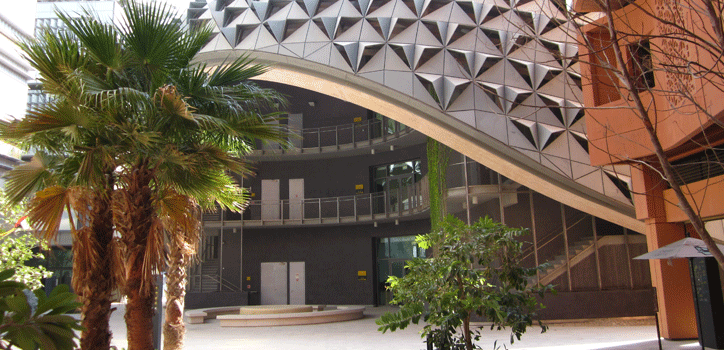The Objectives and Design of New Types of Urbanism
The Chinese Society for Urban Studies (CSUS), the Center for Design & the City at the American Architectural Foundation (AAF), and OTIS hosted the first Sino-U.S. City Design Summit in Zhuhai, China, July 16–17, 2013. The Summit was held in conjunction with the Ministry of Housing and Urban-Rural Development’s 2013 Conference on Urban Development and Planning. The Conference drew an audience of more than 1,500 Chinese mayors, government officials, developers, and city planners. At the Summit, delegate Bill McGee of Jacobs considered the past and future of urbanism.
City planners and “urbanists” have always concerned themselves with the opportunities, developments, and challenges which arise within large and diverse population centers. This was true in 1956 when Jose Luis Sert convened the first urban design conference at Harvard University to initiate a formalized discussion and program to deal with the evolution of the American city; expanding into suburbs, augmented by the automobile, cheap fuel, and available land. It was Sert’s intention to expose his American audience to European models of urban settings, whose scale and diversity might pose an alternative to our bedroom suburbs.
Today, and especially in Asia, growth is occurring in the other direction—from the countryside into the city. The issue of rapid growth, both in population and in the physical manifestation of urban infrastructure, is pressing today in countries like China, whose cities are dealing with massive population movements as its economy transforms itself and the lives of its citizens in mere decades. Technology has afforded planners and builders the tools to access a myriad of data with which to analyze and hypothesize on the new urban environments of the 21st century. It has equally enabled such groups to grapple with the issues facing our cities on a scale not previously imagined.
As Sert had left his native Barcelona to share his design bias with an American academic community, many western designers have spent a great proportion of our careers working with developers and entrepreneurs in the Middle East and Asia. To an important extent, these have been the men and women who shape the urban, physical environment. Their motives are often grounded in civic pride and informed by civic restraints but of course are always driven by notions of profitability. The push and pull between the private and public sectors can be a very creative dynamic, but it can also be subject to great swings in the quality and excess of the built environment.
What are the motives of today’s urban strategists? Not surprisingly our objectives have focused on notions of sustainability. This term is being expanded to include a very broad range of design attitudes. They have in common a new appreciation of our finite resources but also a refreshing optimism for the future of our cities. A few of the “movements” are listed below to acknowledge the general range of the discussion. All of these have an impact on our thinking.
- Ecological Urbanism is another movement started at Harvard, which argues for a “systems-based” approach that is, at its essence, humane.
- Green Urbanism, as its name suggests, is primarily concerned with the consumption of resources. It proposes a very broad, multi-disciplinary approach to design, calling on not only professionals from all the design disciplines but also sociologists, physicists, economists, etc., to collaborate in designing cities.
- Landscape Urbanism posits the argument that the city’s landscape rather than its building-scape is a more powerful agent of urban design.
- New Urbanism arose in the 1980s along with the post-modernist movement in architecture to focus on pedestrian-oriented neighborhoods and communities based in local history and context. It specifically cites the profusion of urban sprawl brought about by the automobile.
- Sustainable Urbanism is somewhat analogous to green urbanism in that it advocates for the use of locally available resources and addresses the lifecycle of products. It also espouses the “eco-city.”
Many organizations have emerged to help organize the push towards more sustainable cities. At Jacobs/KlingStubbins, we have worked with the ten principles of One Planet Living for Middle Eastern Eco-Developments. We have elicited the services of NSI to pursue water harvesting and storage in the flood plains of the Mekong delta. Monte Wilson of our organization will be sharing the exciting possibilities found in the emerging practices of biomimicry.
Specifically our practice has pursued large-scale urban issues in the following commissions:
Plaza Cambodia, Phnom Penh, Cambodia
Crocus City, Moscow, Russia
KCARE Competition, Saudi Arabia
Xiamen Transit, Xiamen, China
I will be touching on these in the summit as a means to discuss the lessons we have learned through interacting with clients both public and private in very different international settings.

Bill McGee has more than 30 years of experience as a senior designer and urban designer and planner with large mixed-use projects in both national and international markets. He is responsible for establishing a reputation for large-scale commercial and world-renowned hospitality projects. He received his master of architecture and urban design from the Harvard University Graduate School of Design and his bachelor of architecture from the University of Minnesota.
Jacobs, with 2012 revenues of nearly $11 billion, is one of the world’s largest and most diverse providers of professional, technical, and construction services, including all aspects of planning, architecture, engineering, construction, operations, and maintenance as well as specialty consulting. Founded in 1947, Jacobs serves a broad range of companies and organizations, including corporate, commercial, industrial, institutional, and government clients across multiple markets and geographies. With an integrated network of over 65,000 employees located in 200+ locations worldwide, the company prides itself on building long-term relationships with its clients. www.jacobs.com
Featured image of a building in Masdar City, Abu Dhabi, UAE courtesy of Jan Seifert.


